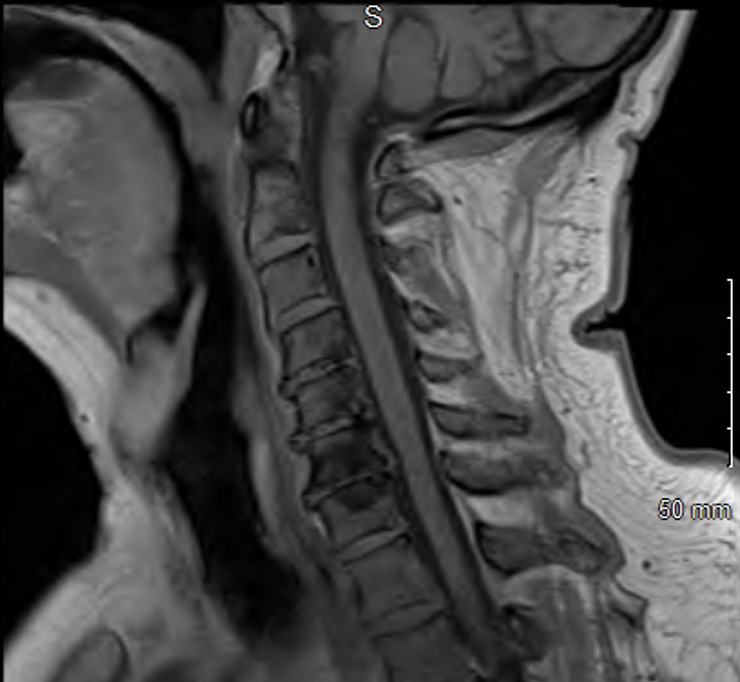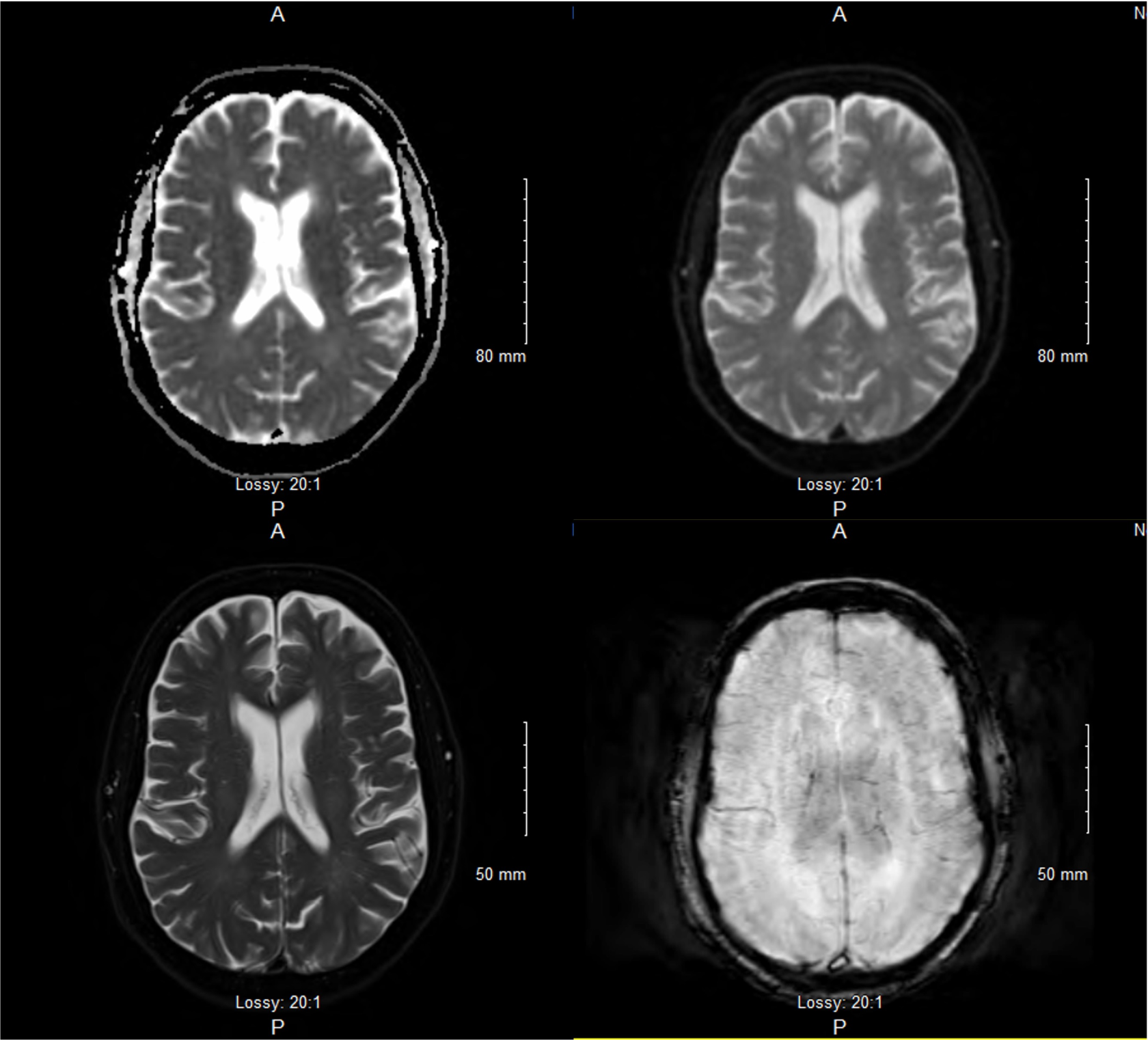A Tough Pill to Swallow: A Case of Post COVID-19 Myasthenia Gravis
Jovanne Tamparon-Rosette, MD, Tarab Mansoor, MD
SAMC Department of Family Medicine Residency Program
ABSTRACT
Various neurological sequelae have been associated with prior COVID-19 infection. This is the case of a 69-year-old Caucasian male who presented with 8 days of progressive dysphagia and dysarthria secondary to new onset Myasthenia Gravis in the setting of a recent COVID-19 infection.
INTRODUCTION
Myasthenia Gravis (MG) is an autoimmune disorder caused by the destruction of post-synaptic neuromuscular junctions by the formation of acetylcholine receptor (AChR) autoantibodies resulting in muscular fatiguability.[5] Infections are known triggers of MG crisis and the effects of COVID-19 in patients with pre-existing MG have been previously documented. However, there have been infrequent reports regarding the presentation of new-onset MG post-COVID-19.[6]
CASE REPORT
A 69-year-old Caucasian male with a history of BPH, 50-pack-year smoking history, hypertension and recent spinal fusion presented on January 19, 2023, with 8 days of progressive dysphagia and dysarthria. He denied previous similar episodes or other neurological complaints including vision changes. Family history was unremarkable. He did, however, report positive RT-PCR on December 8, 2022, for which he received treatment with Paxlovid for mild symptoms.
He also received treatment with a course of steroids and antivirals from his PCP for presumed Bells Palsy which offered no significant relief. Upon hospitalization, examination was notable for profound dysphagia, dysarthria with reduced labial and pharyngeal sounds, and weakness of the bilateral orbicularis oculus and lower facial muscles.
Initial workup with CBC, CMP, ESR, CRP, viral panel, head CT, MRI of the brain and neck were unremarkable. A video and barium swallow confirmed severe dysphagia and patient was kept NPO. Differentials included Miller Fisher Variant of Guillain-Barre Syndrome (GBS) and MG.
CSF fluid analysis did not reveal elevated protein levels. Anti-GQ1b Ganglioside antibodies were negative. However, serum AChR antibodies were positive at a level of 28.32 nmol/L and he was subsequently treated with 5 days of IVIG and IM Mestinon with near complete resolution of symptoms. His diet was subsequently resumed, much to the patient's relief. He was advised outpatient follow-up with Neurology for consideration of human monoclonal antibody therapy, Ultomiris.
IMAGES

Figure 1. Neck MRI, sagittal view, showing no signs of compression

Figure 1.2. Brain MRI, transverse view, showing only mild chronic microvascular changes

Figure 2. Neck MRI, sagittal view, showing no signs of compression
DISCUSSION
Multiple post COVID-19 neurologic complications have been published including neuropathy, myopathy, GBS and neuromuscular disorders.[2,6] Reports of post COVID-19 MG are infrequent but increasing. Previous articles describe a 10 to 30-day window between initial COVID-19 infection and onset of MG symptoms.[4] Pathogenesis remains unclear. Reports speculate molecular mimicry between AChR and viral antigenic proteins.[3] An imbalance between T-lymphocytes stimulating AChR overexpression, hence, autoantibody production has also been hypothesized. The possibility of COVID-19 precipitating latent MG cannot be excluded.[6]
REFERENCES
1. Assini, A., Gandoglia, I., Damato, V., Rikani, K., Evoli, A., Del Sette, M. Myasthenia gravis associated with anti-MuSK antibodies developed after SARS-CoV-2 infection. (2020). Eur J Neurol. 2021; 28:3537–3539.
2. Chatterjee, T., Kumaran, S., Roy, M. A Case Report and Literature Review of New-Onset Myasthenia Gravis After COVID-19 Infection. (2022). Chatterjee et al. Cureus14(12):e33048.DOI10.7759/cureus.330487.
3. Huber, M., Rogozininski, S., Puppe, W., Framme, C., Hoglinger, G., Wegner, F. Postinfectious onset of myasthenia gravis in a COVID-19 patient. (2020). Front Neurol. 2020, 11:576153.
4. Karimi, N., Okhovat, A., Ziaadini, B.,Ashtiani, B., Nafissi,S. , Fatehi, F. Myasthenia gravis associated with novel coronavirus 2019 infection: A report of three cases.(2021). Clinical Neurology and Neurosurgery 208106834. https://doi.org/10.1016/j.clineuro.2021.106834.
5. Sriwastava, S., Tandon, M., Kataria ,S., Daimee, M., Sultan, S. New onset of ocular myasthenia gravis in a patient with COVID-19: a novel case report and literature review. (2020). Journal of Neurology 268:2690–2696. https://doi.org/10.1007/s00415-020-10263-1.
6. Tereshko, Y., Gigli, G.,Pez,S., De Pellegrin, A., Valente, M. New-onset Myasthenia Gravis after SARS-CoV-2 infection: case report and literature review. (2023). Journal of Neurology 270:601–609. https://doi.org/10.1007/s00415-022-11472-6.
